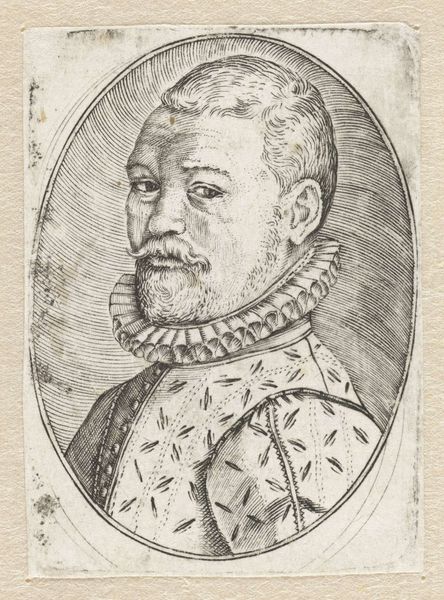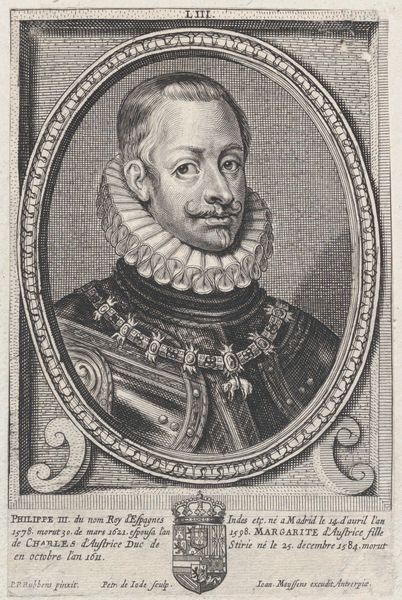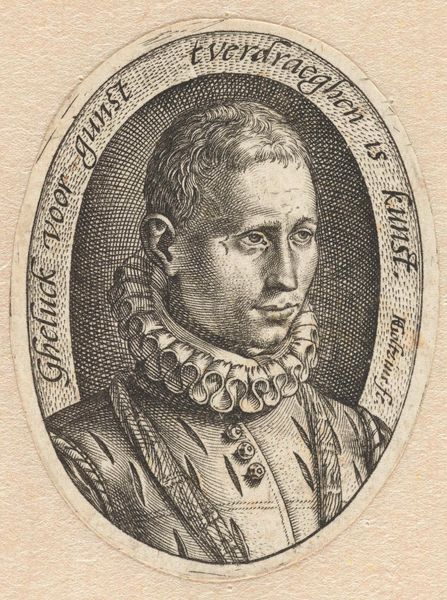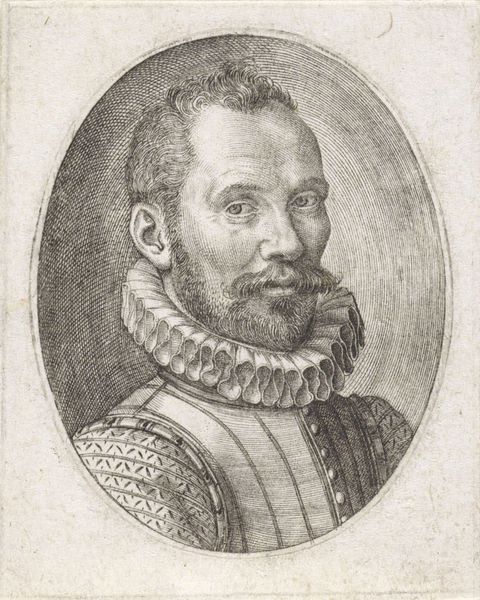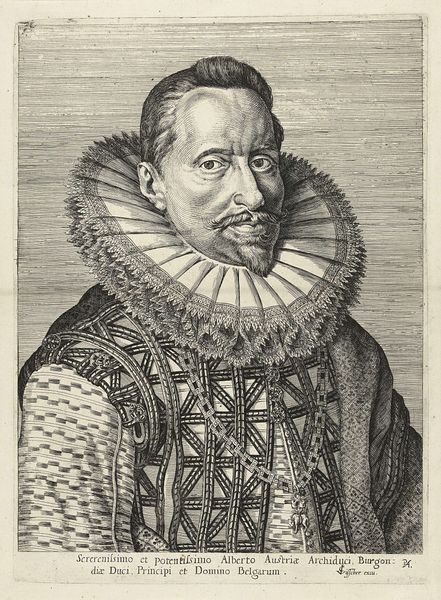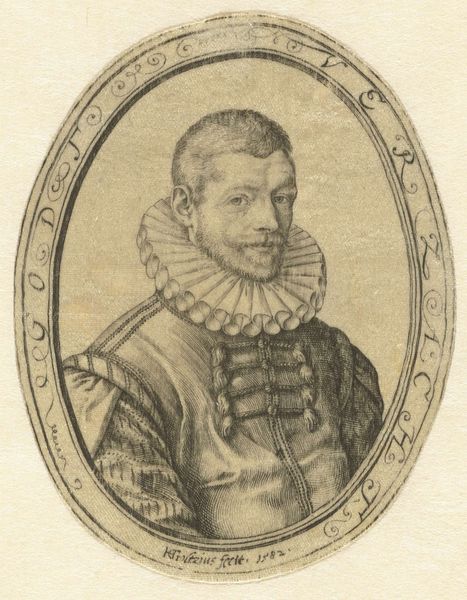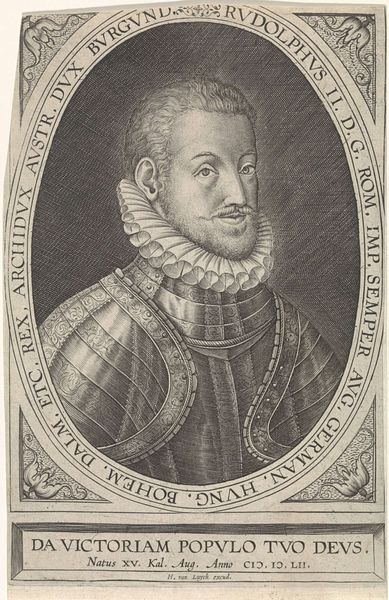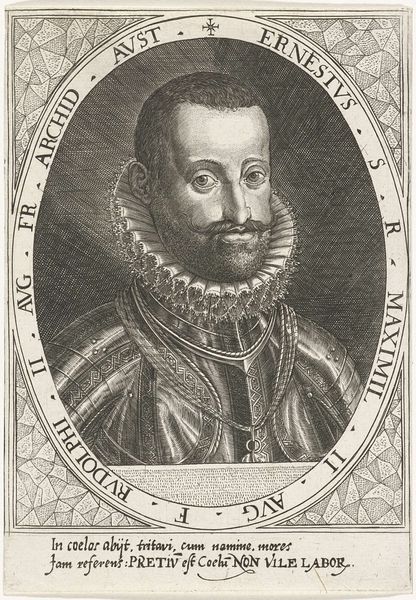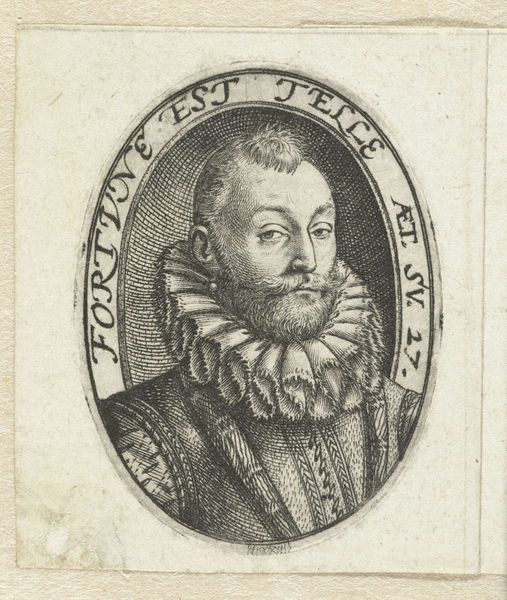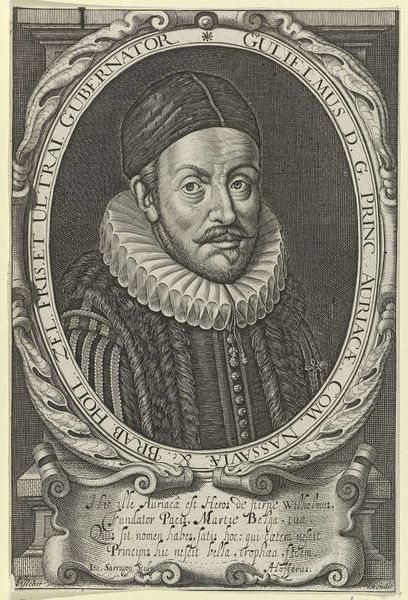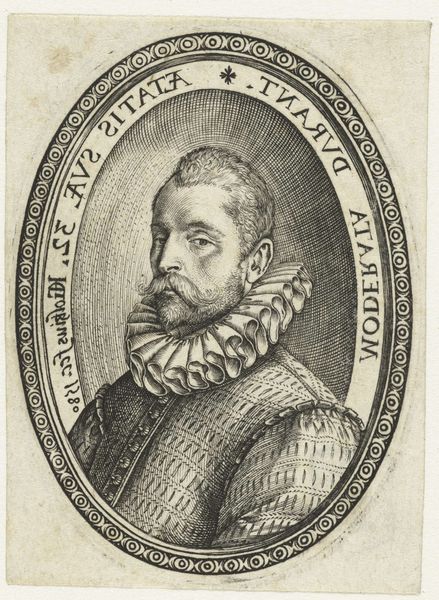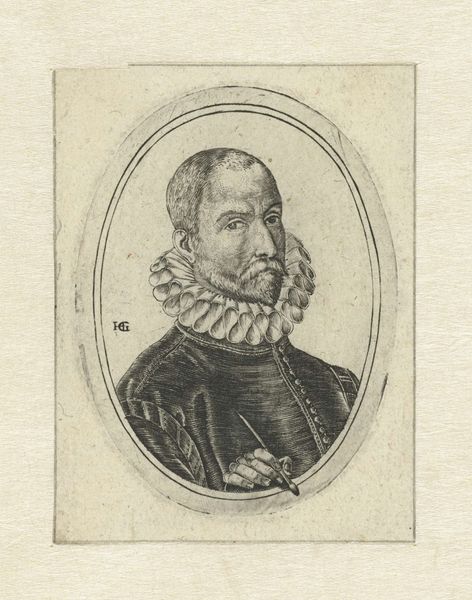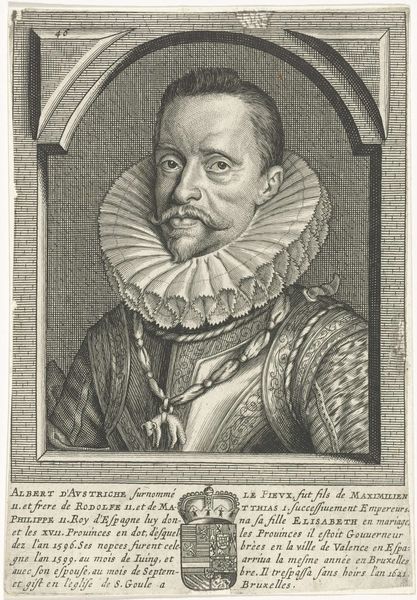
print, etching, intaglio, engraving
#
portrait
#
self-portrait
# print
#
etching
#
intaglio
#
11_renaissance
#
portrait reference
#
pencil drawing
#
portrait drawing
#
northern-renaissance
#
engraving
Dimensions: height 44 mm, width 34 mm
Copyright: Rijks Museum: Open Domain
Curator: Let's discuss this striking bust portrait. Created before 1620, and currently held in the Rijksmuseum, it is an intaglio print—specifically an etching or engraving—by the artist known as Wierix. Editor: My first impression is one of constrained elegance. There’s something undeniably formal about the composition, contained within that oval frame, but I’m drawn to the texture; the layering of those lines and the visual weight of the ruff draw my eye immediately. Curator: Absolutely. The ruff is quite telling. Its presence signifies status and wealth, and we might even delve into the constraints of such rigid fashions on gender performance and social expectation during this era. These portraits reinforced very specific power structures. Editor: And consider the sheer labor invested in its production—all those tiny, precise cuts. How much time went into the execution? The image's circulation was key. The print format democratizes portraiture to some degree, creating reproducibility. Who was commissioning these portraits, and for what audiences were they intended? What sort of workshops was Wierix associated with and where did he procure the material for making these engravings? Curator: An excellent question. Prints like these could circulate amongst a wider audience, enabling a type of visual rhetoric – and the establishment and maintenance of social identity– beyond the elite who could afford painted portraits. Also, even though it is labeled as 'an unknown man', we can interpret such portrait within gender studies: Who had the permission or social authorization to get their image published like that? How does this privilege become ingrained with time through arts like portraiture, for example? Editor: I agree completely. It is easy to get lost on the content when the materiality is often a key aspect in that type of commission work. Looking at this particular engraving from Wierix—whose workshop had an output that spread around all Europe at the time—really demands attention to the historical details. Curator: Indeed. Considering the broader context is critical. It shifts our understanding of portraiture beyond mere likeness to its function as a cultural and political tool. Editor: So true. Focusing on the tangible aspects really underscores the way value, representation, and power are embedded in this artwork. Curator: Ultimately, understanding the confluence of these approaches unlocks a deeper significance within this historical portrait. Editor: It gives us a more nuanced picture, so to speak, of the labor and social implications of artistic creation at the time.
Comments
No comments
Be the first to comment and join the conversation on the ultimate creative platform.
